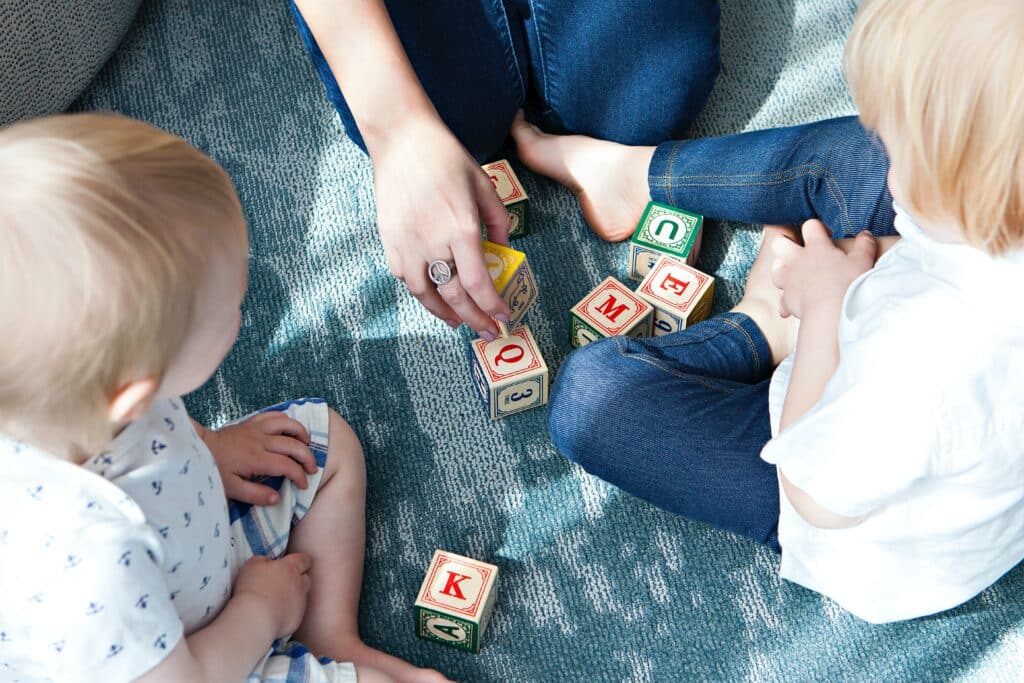How to make the 10-min per day quality time work
But first, let’s look at the WHY of one-on-one time – this is where I get back to when I am tired, annoyed, drained, and absolutely don’t feel like spending time with my child but just want to go to the couch and scroll IG. (Yes, I am a normal mom and also feel that way once in a while). Going back to why I am dedicated to spending quality time with each of my kids get me out of the rut, my ass up the couch, and get into it! And you know what: I always feel better afterward because this time is not only for them, it’s also for me and my soul. We all need relationships to thrive, and despite all the chores and errands a mom has on her list, it’s actually fun and nurturing for us too to spend quality time with our kids.
One-on-one quality time with your child is an essential aspect of building a strong and healthy parent-child relationship. This type of quality time involves giving your undivided attention to your child, listening to them, and engaging in activities that they enjoy.
Spending quality time with your child is important for several reasons. Here are some of the benefits of spending one on one quality time with your child:
- Strengthening the parent-child bond: Spending time together allows you to build a stronger connection with your child, which is essential for developing a healthy and trusting relationship.
- Improving communication: One-on-one time gives you the opportunity to talk and listen to your child, helping to improve communication between the two of you.
- Enhancing emotional intelligence: Quality time spent with your child can help them develop their emotional intelligence, which includes the ability to identify and express emotions, empathize with others, and regulate their own emotions.
- Boosting self-esteem: When you spend quality time with your child, you are showing them that they are important to you and that you value their company. This can help boost their self-esteem and confidence.
- Providing opportunities for learning: One-on-one quality time with your child provides opportunities for learning, whether it’s through engaging in activities together or simply talking and sharing ideas.
- Creating positive memories: Spending quality time with your child allows you to create positive memories that you both can cherish for years to come.
Overall, spending quality time with your child is an investment in their emotional and social development, as well as in the strength of your relationship with them. It can be beneficial for both you and your child and can help to create a strong foundation for their future.
Why is it not working for me??
You may have read about the 10 min per-day tool, but you don’t see results. The opposite: your child gets really frustrated and anxious about the 10 min, already worrying that the 10 min are over soon, not able to relax and be in the present moment, enjoying the time together.
I want to normalize that not everything works for every child and every parent. That’s that. But don’t give up yet, try the suggestions below:
Sometimes it’s difficult to understand the “WHY” behind a parenting tool.
If you read only “spend 10 min per day with your child to decrease tantrums” you are missing a lot of the information that you actually need to make the 10 min 1:1 time work.
Remove the timer
Having a timer works for some kids, and might not work for others.
The focus of the 1:1 time is not on the 10 min. The focus is on the activity spent together.
If your child gets stressed about the 10 min, remove the timer and find activities that last approx. 10 min. For example:
- “Would you like to play 2 rounds of UNO?”
- “Are you up for baking chocolate chip cookies?” (if you measure the ingredients beforehand it takes very little time to mix it all together and scoop up the cookie dough”
- “Are you up for a bike ride around the neighborhood? (You decide how far you go, communicate the route before you start)
Practice mindfulness together

Another thing you can try if the 10 min timer method doesn’t work, is to work on mindfulness (for both of you) – which is actually always a beneficial skill to have.
Kids feel when we are not fully present. When we have a million things in our minds while we force ourselves to dedicate 10 min per day.
Become aware:
- Are YOU really present?
- Are you going through your to-do list in your mind while you sit with him and play?
- Would you prefer to be somewhere else?
Children feel our energy. They feel when we are not really there.
Children feel our energy. They feel when we are not really there.
Practice awareness and mindfulness together:
“Now I turn my phone and the TV off so that I can focus on our play”
“I realize that I am feeling a little unsettled inside, feeling restless. Do you want to do a grounding exercise with me before we start playing?”
“We’ll not check the time, we play this game until it’s finished, however long that may take”
Here are some tips for making the most of your one on one quality time with your child
- Be fully present: Put aside any distractions and focus solely on your child during your time together. This means putting away your phone, turning off the TV, and giving them your undivided attention.
- Listen actively: Encourage your child to share their thoughts, feelings, and experiences with you. Listen actively by asking open-ended questions, reflecting back on what they say, and showing empathy.
- Engage in activities they enjoy: Whether it’s playing a game, going for a walk, or reading a book together, engage in activities that your child enjoys. This will show them that you value their interests and are interested in spending time with them.
- Create a routine: Set aside regular time for one on one quality time with your child. This could be a weekly outing, a daily bedtime routine, or any other consistent schedule that works for you and your child.
- Make it special: Do something that makes your time together feel special and memorable. This could be anything from baking cookies together to taking a special trip or having a picnic in the park.
Remember…
One-on-one quality time with your child doesn’t have to be complicated or expensive. The most important thing is to prioritize this time and show your child that they are loved and valued. The focus is not the 10 min, the focus is quality time with your child.
Relationships need bonding and nurturing during quality time.
We spend so much of our time in the family with errands and chores, studying and working. The 10 min per day is an invitation to intentionally and mindfully connect with your child for them and for you.




